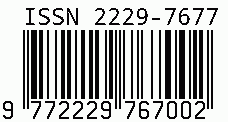
International Journal on Science and Technology
E-ISSN: 2229-7677
•
Impact Factor: 9.88
A Widely Indexed Open Access Peer Reviewed Multidisciplinary Bi-monthly Scholarly International Journal
Plagiarism is checked by the leading plagiarism checker
Call for Paper
Volume 16 Issue 4
October-December 2025
Indexing Partners



















Defects Reduction of Gear Box Housing (GBI 991) through Process Improvement.
| Author(s) | Mr. Sachin Sadashiv Patil, Mr. Dhairyashil Ashok Naik |
|---|---|
| Country | India |
| Abstract | The Indian Foundry cluster is a key player in the production of metal castings used across various industries, including automobiles, railways, machinery, sanitary appliances, pipes, gears, earth-moving equipment, cement, electric circuits, pumps, valves, and wind turbines. Grey iron is the predominant material, constituting around 68% of all cast parts. In this context, Kolhapur plays a pivotal role in the production of diverse castings in India, primarily focusing on grey iron and SG iron castings, both of which are ferrous materials. One established foundry in Kolhapur faced stricter rejection standards for specific castings. To address these issues, a comprehensive case study was conducted to reduce rejection rates in this foundry. The primary focus of the study was on a specific casting, the Gearbox Housing, which had an initial average rejection rate of 13%. In some instances, this rejection rate spiked to as high as 18% in a single month, resulting in significant revenue losses for the company. Defects occurred in a casting of Gear box housing of foundry are categorized in to two parts. Namely methoding, filling and solidification related defects such as shrinkage porosity, hot tears, etc.& sand and mould related defects such as sand drop, bad mould, etc. In the first part casting simulation technique, analysis for shrinkage, porosity defect will perform and new gating system designed. Number of iterations will be performed using simulation software to achieve optimum design. With new gating system reduction in defects and yield improvement may observed. A new gating system was designed to enhance the casting process. In the subsequent stage of defect reduction, the Design of Experiment (DoE) tool was employed. This data-driven approach helped refine and optimize the manufacturing process to minimize defects and enhance the overall quality of Gearbox Housing castings. By implementing these strategies, the foundry in Kolhapur successfully reduced rejection rates, thereby safeguarding company revenue and ensuring the production of high-quality castings for various industrial applications. |
| Keywords | Casting Defects; Optimization and Analysis; Design of Experiment; Gray Relation Analysis; Sand Inclusion; Parameter optimization |
| Field | Engineering |
| Published In | Volume 16, Issue 3, July-September 2025 |
| Published On | 2025-07-20 |
| DOI | https://doi.org/10.71097/IJSAT.v16.i3.7139 |
| Short DOI | https://doi.org/g9t2wg |
Share this


CrossRef DOI is assigned to each research paper published in our journal.
IJSAT DOI prefix is
10.71097/IJSAT
Downloads
All research papers published on this website are licensed under Creative Commons Attribution-ShareAlike 4.0 International License, and all rights belong to their respective authors/researchers.

